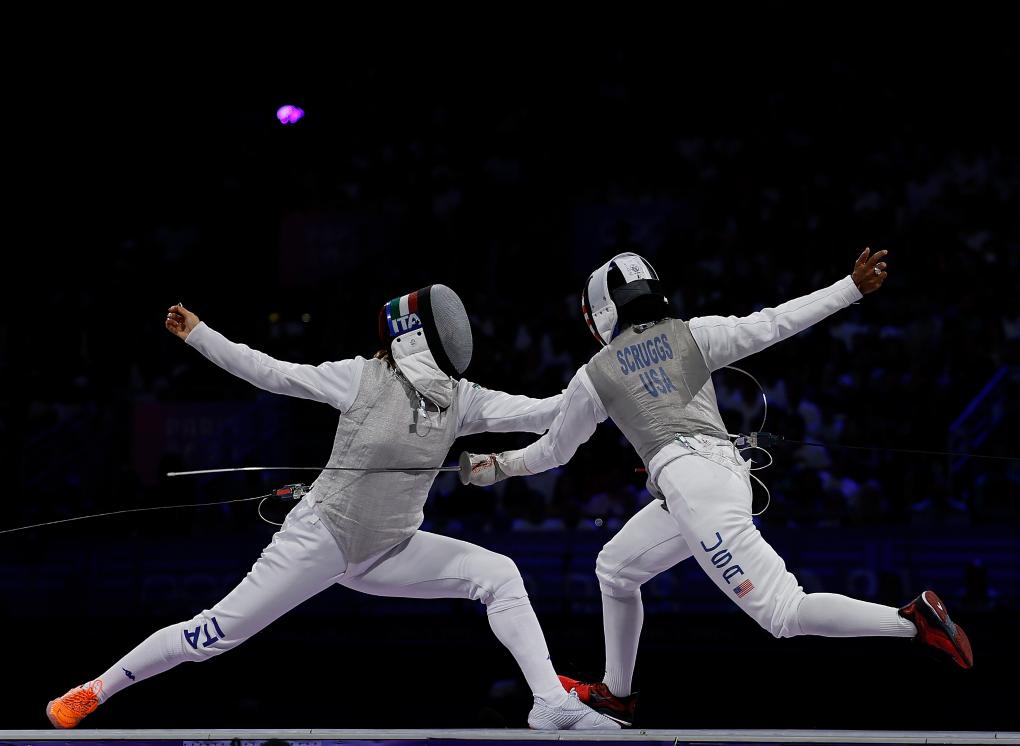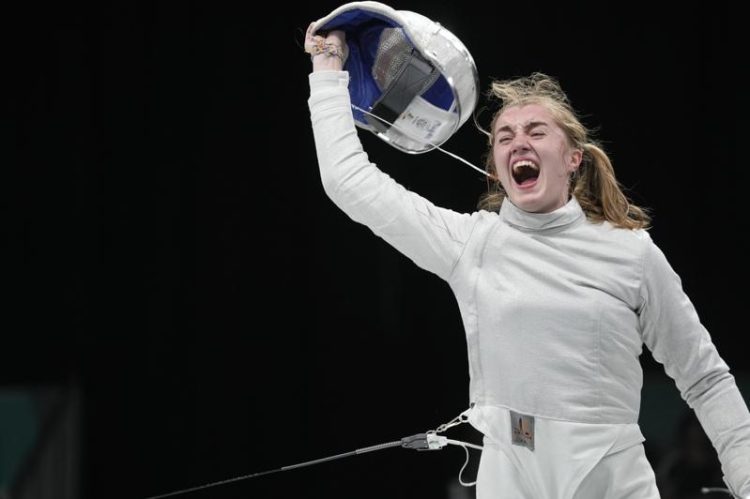Introduction: The Evolution of Fencing and Its Current Rules
Fencing is a sport with deep historical roots, tracing its origins back to the duels of the Middle Ages and later evolving into a competitive sport in the 19th century. Today, it is an Olympic discipline with three distinct weapons: foil, epee, and sabre. Over the years, fencing has undergone several rule changes to increase safety, fairness, and spectator engagement. Despite these adjustments, there is growing debate over whether the current set of rules, which were designed to balance fairness and tradition, still serve the sport’s long-term development, particularly in terms of encouraging aggressive play and ensuring fairness.
As with any sport, the balance between tradition and modernization is crucial. While the existing rules have served the sport for many decades, critics argue that they may unintentionally stifle more dynamic and offensive styles of play. Conversely, the defenders of the current system contend that the rules are fair, and any changes could undermine the tactical nature of fencing.
In this article, we will explore whether fencing’s current rules are truly fair and whether they do enough to encourage aggressive and exciting play, or if it’s time for a reassessment.
I. An Overview of Current Fencing Rules and Structure
Before delving into the question of fairness and offensive strategy, it’s essential to first understand the key elements of fencing rules and how they impact the sport’s structure:
A. Scoring System
In modern fencing, points are awarded based on a successful touch, which occurs when the fencer’s weapon makes contact with their opponent’s valid target area. The three weapons have different target areas and specific rules governing what constitutes a valid touch:
- Foil: The valid target area is the torso, and touches must be scored with the tip of the blade. It uses a priority system to determine the winner of simultaneous touches.
- Epee: The entire body is a valid target, and the first fencer to land a touch scores the point, with no priority rule.
- Sabre: The valid target area includes the torso, arms, and head. Points can be scored with both the tip and the edge of the blade, with priority rules similar to foil.
B. The Concept of Priority (Right of Way)
One of the most controversial rules in fencing is the priority (or right of way) rule, which applies primarily to foil and sabre. This rule was designed to determine who is awarded the point when both fencers land a touch at the same time. The attacking fencer is awarded the point if they can demonstrate a clear attacking motion, while the defensive fencer must make a valid defensive move, such as a parry, to maintain the point.
While this rule is intended to reward offensive fencing, it often leads to confusion and frustration. Many fencers and fans argue that the priority rule can sometimes seem arbitrary and lead to points being awarded in situations where the fencer who technically made the more skillful or successful touch does not win the point.
C. Time and Speed Constraints
In addition to the scoring system, fencing matches are also governed by time limits, with three-minute periods for each round. If no clear winner emerges, the match may go into extra time, further complicating the decision-making process. This time limit can sometimes force fencers to adapt their strategy, especially in defensive encounters, where it becomes harder to break the deadlock and create opportunities for aggressive play.
II. Is the Current System Fair? A Critique of Fencing’s Rules
While the fencing rules have been refined over time to maintain fairness, they are not without their critics. Some believe that the existing rules may not be as equitable or transparent as they should be, especially when it comes to ensuring aggressive play and providing clear outcomes.
A. The Priority Rule and its Impact on Fairness
The priority rule is one of the most debated aspects of modern fencing. Proponents argue that it rewards offensive fencers and incentivizes attacking play, while critics contend that it often leads to subjective decision-making and inconsistent calls. The idea of “whoever is attacking first gets the point” can sometimes seem unfair in instances where the defensive fencer executes a perfect parry and counter-attack, only to lose the point simply because the attacking fencer made the initial offensive gesture.
This subjective element is particularly frustrating in close matches where the margin between victory and defeat is razor-thin. Many feel that a more objective approach to scoring, where both fencers are equally considered based on their technical performance, would lead to fairer and clearer results.
B. The Lack of Emphasis on Offensive Strategies in Foil and Sabre
Although fencing is fundamentally a sport that rewards technical skill and tactical intelligence, the priority rule can lead to defensive styles being overly rewarded. The system, particularly in foil and sabre, often gives the attacking fencer an advantage, but it does not always lead to genuinely exciting or aggressive fencing.
In some cases, the reward for attacking is too automatic, meaning that defensive fencers who counter their opponent’s attack with sharp parries or clever ripostes might not get the recognition they deserve. This could potentially dissuade fencers from taking risks in attacking, as a well-executed counter-attack can still be negated by the priority rule.
In epee, where there is no priority rule, the lack of a reward for offensive play can also lead to more cautious fencing. Fencers are encouraged to wait for the right moment to strike rather than pushing for an attack, leading to long periods of stale exchanges. While this tactical style can be exciting for purists, it may alienate casual fans who prefer more fast-paced and aggressive competition.
C. Equipment and Technology Limitations
Fencing’s reliance on electronic scoring also brings its own set of challenges. While light-based scoring systems have vastly improved the accuracy and speed of determining points, there have still been instances where discrepancies in the scoring process have led to confusion. Additionally, not all fencing weapons respond equally well to the technology, and occasional malfunctions have resulted in disputed points. This highlights the vulnerability of the system, where technical failures might overshadow fair play.
III. Do the Rules Encourage Aggressive Play?
An ongoing challenge in fencing is determining whether the rules encourage the kind of aggressive, fast-paced play that would captivate broader audiences. Many argue that while the current rules do reward attacking play, the structure of the sport might not do enough to encourage consistent offensive movements across all disciplines.
A. Increasing Emphasis on Action in Foil and Sabre
In the foil and sabre events, fencers are expected to demonstrate fast reflexes, sharp attacks, and creative counter-attacks. However, because of the priority rule, defensive play can sometimes become overly dominant, as fencers adopt a more reactive style to force the opponent into making the first move.
While this defensive strategy can be effective, it does not always result in dynamic and engaging matches. In sabre, which is supposed to be one of the fastest and most aggressive of the three weapons, the rules might unintentionally reward fencers who wait for their opponents to make a mistake, rather than those who take risks and push the pace of the game.
B. The Need for Clearer Scoring for Aggressive Moves
One way to foster more aggressive play could be by adjusting the scoring system to reward successful counter-attacks and offensive thrusts more clearly. Fencers who land attacks in an aggressive, direct manner should be rewarded without the ambiguity of the priority rule. A system that equally values the attacker and the counter-attacker could lead to more dynamic exchanges and a faster pace of play.
Additionally, increasing time pressure or penalizing defensive stalling could encourage more offensive-minded strategies. For instance, if a fencer does not make a certain number of attacks or attempts within a specified time, they could lose points or receive a warning, similar to other sports that penalize players for stalling or playing too conservatively.

IV. Potential Solutions and Adjustments to the Rules
To strike a better balance between fairness and encouraging more offensive play, there are several potential rule adjustments that could be considered:
A. Remove or Refine the Priority Rule
One potential adjustment would be to reassess the priority rule and refine it to better reflect the dynamic nature of fencing. One option could be to abolish the rule entirely and revert to a system where simultaneous touches are simply scored as simultaneous points, as in epee. This would eliminate the subjectivity and controversy that often accompanies priority calls.
Alternatively, a more refined version of the rule could be introduced, where the priority is awarded based on tactical superiority (for example, awarding the point to the fencer who executed the more skillful or clean attack, rather than simply rewarding the one who started the action).
B. Encourage More Offensive Play Through Time Constraints
To avoid matches becoming overly defensive, time limits could be implemented where fencers are required to engage in an attack within a certain time frame. If a fencer fails to make an offensive attempt within a set period, they could be penalized or automatically lose the point. This would force both fencers to engage in a more aggressive and fast-paced style of play.
C. Refine Scoring Systems to Recognize Tactical Play
Instead of simply rewarding a fencer who attacks first, the scoring system could be adjusted to better reward offensive tactics that are executed with skill and precision. For example, a successful counter-attack could be awarded a slightly higher score than a basic attacking touch, encouraging fencers to employ a wider range of strategies.
V. Conclusion: Striking the Right Balance
Fencing’s current rules have served the sport well for many years, but there is a growing consensus that changes are necessary to promote more aggressive play and ensure fairness in the scoring system. While it is crucial to preserve the sport’s tradition, innovation is equally important to keep fencing exciting and accessible to a wider audience.
By reevaluating the priority rule, encouraging more offensive play, and making refinements to the existing rules, fencing could evolve into a more dynamic and spectator-friendly sport without losing the intricacies and strategies that make it so unique. The balance between fairness, excitement, and tradition will define the future of fencing as it continues to evolve on the world stage.


































Discussion about this post